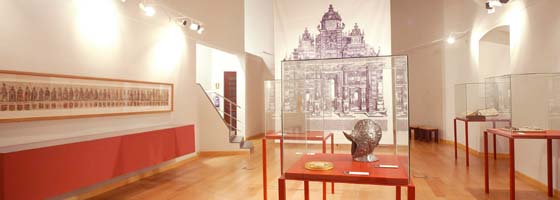| Centuries of closely guarded history, thousands of documents in which the activity of this age-old institution was recorded in print, fragmented pieces of old files, now lying in bundles of papers that conceal remnants of the life of the university, kept in its unique and valuable archive. Primitive bases for the transmission of knowledge, worn out tools, moulds, scientific instruments and examples of chance archaeological findings make up the rich treasure of our ordered tradition. Permanently open to the interest of those who passed through the university’s lecture theatres and to those wishing to visit the examples of the ritual of science, all is now housed in the Museum of the University of Valladolid – MUVa.
From the very moment of its creation, the University of Valladolid has taken tremendous care to preserve the documents produced by its teaching activity and even greater care with those received from civil authorities (the crown and the council) and the clergy (the pope), as these ensured the income required for the development of the educational activity and the university’s own jurisdiction. These relatively few early documents were conserved in a safe chest together with other ornaments and were included in the inventory of valuable objects.
The Statutes of the University of Valladolid that Charles V passed in 1545, the first in Spanish, stipulated that the archive of the cloister was to be installed in the chapel, in a safe chest locked with three keys (one in the possession of the chancellor, a second to be kept by the “Chanciller” and the third by one of the doctors of the cloister). Years later, Philip II, through the “privilege of the Conservaduría”, confirmed the privilege of the independent jurisdiction the university had enjoyed since its beginnings. As a result of this privilege, the Archive conserves 302 papers of criminal, civil, executive and apostolic proceedings, including the documentation deriving from these causes from the end of the 16th century to 1801. This constitutes one of the most interesting series for research into modern history thanks to the variety of testimonies they contain regarding not only university life, but also 17th and 18th century urban life.
|








